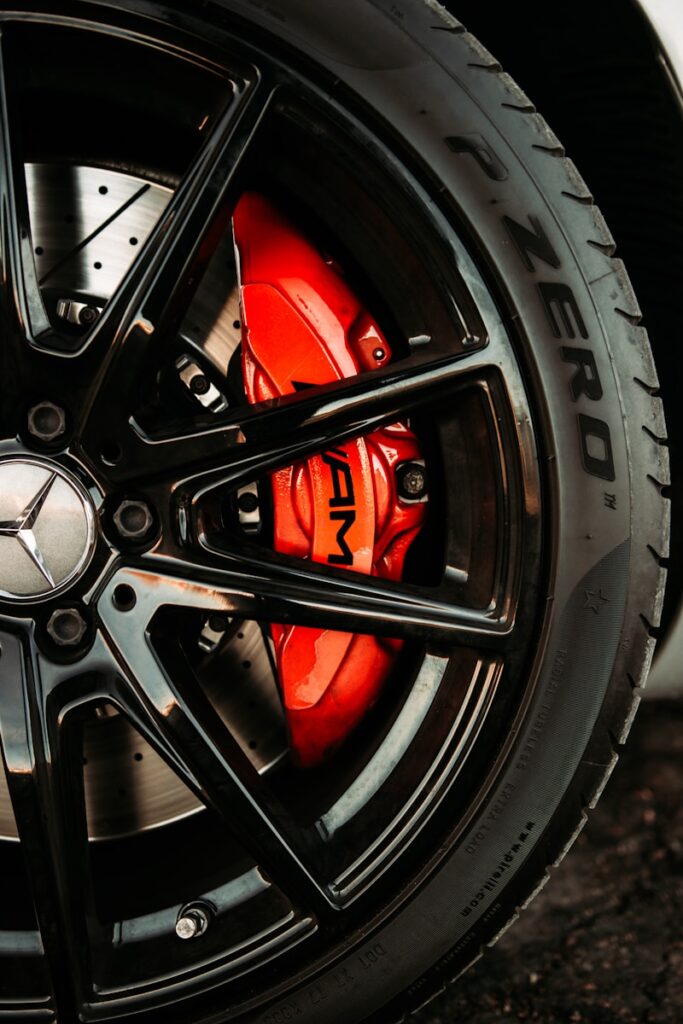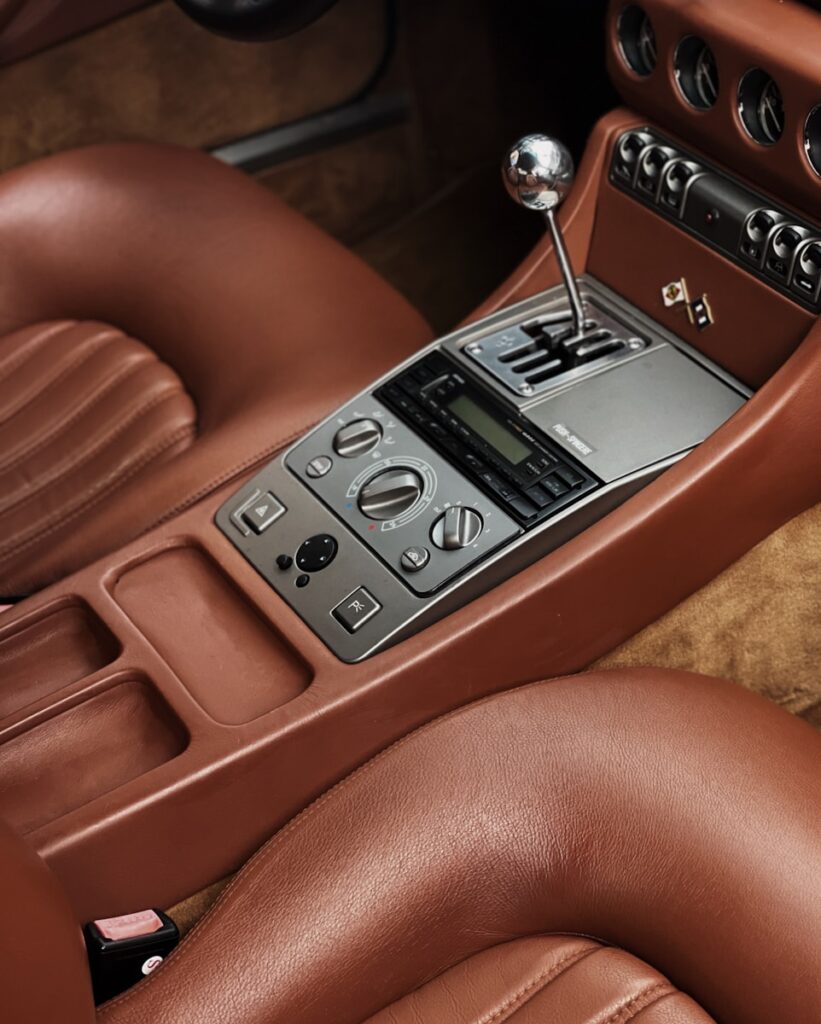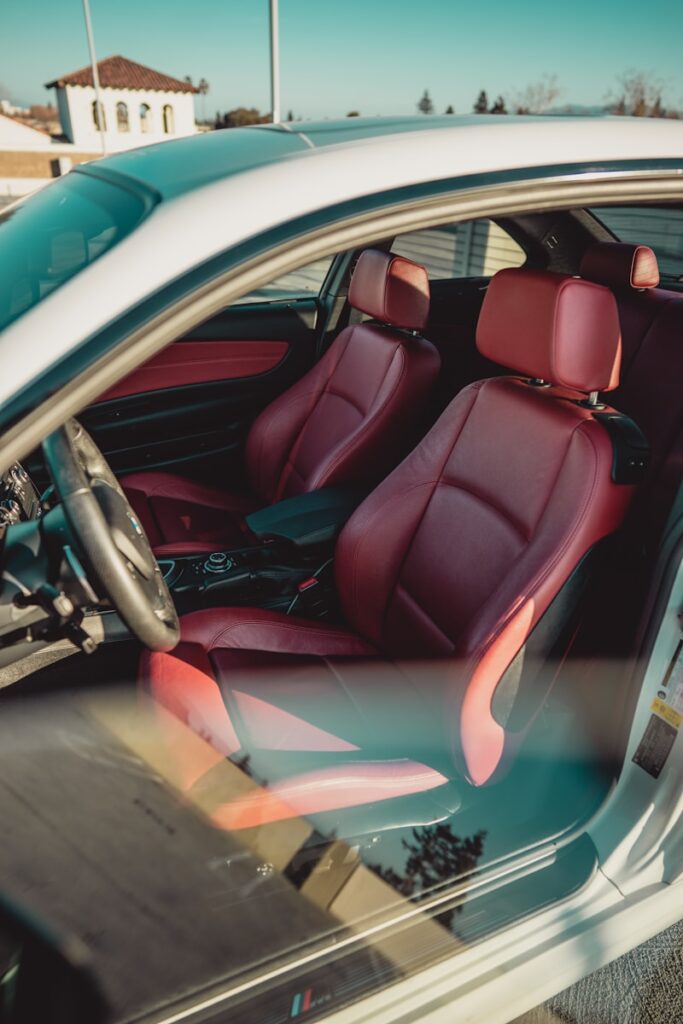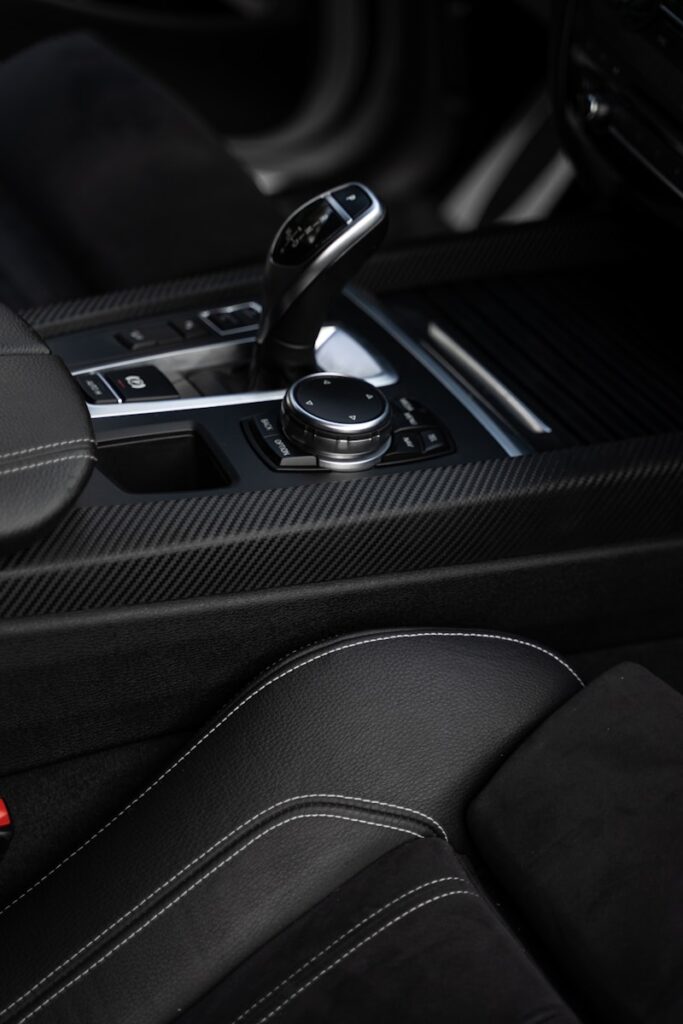Hey there! If you’re like me, you love keeping your car looking sharp. But over time, the trim on your car—those plastic or rubber bits around the windows, bumpers, or grille—can fade, crack, or look downright tired. I’ve been there, staring at my car’s dull trim, wondering how to bring it back to life. Restoring car trim isn’t as hard as it seems, and I’m excited to share my experience with you. In this guide, I’ll walk you through everything I’ve learned about how to restore trim on car, from cleaning to protecting, so your ride can shine like it just rolled off the lot.
Restoring the black plastic trim on your vehicle can be a gratifying DIY project that not only improves the appearance of your ride but also protects it from further wear and tear. As car enthusiasts, we know the frustration of seeing the once vibrant black trims fade to a dull grey. Sun exposure, weather conditions, and time contribute to this unsightly change, but with the right approach, we can bring back the original luster of these plastic parts.
Our method is durable, practical, and doesn’t require expensive tools or professional assistance. We’ll focus on products and techniques that nourish and rejuvenate the plastic, offering protection against UV rays and oxidation. By the end of this journey, you’ll see a remarkable difference that goes beyond cosmetics; it’s about preserving the integrity of your vehicle’s components. Let’s get started on this rejuvenation journey for your car’s trims!
1. **Understanding Why Trim Fades and How to Spot the Problem**Let’s start with why your car’s trim looks so beat up. The plastic or rubber trim on your car takes a relentless beating from the sun’s harsh UV rays, torrential rain, abrasive road grime, and even aggressive car wash chemicals. Over time, this constant exposure causes the trim to fade, turning it from a sleek black to a drab gray, or developing an unappealing chalky texture. I certainly noticed this on my old sedan’s bumper trim—it transformed from a vibrant, deep black to a sad, patchy gray, clearly showing the effects of prolonged environmental stress.
It’s crucial to understand that this degradation isn’t merely a superficial issue that only affects your car’s aesthetics. The fading and discoloration of black plastic trim on vehicles occur primarily due to oxidation, a chemical process often significantly exacerbated by intense UV exposure. The longer the plastic trim remains unprotected, the more it degrades on a molecular level, losing its original texture, flexibility, and vibrant color.
At its core, the problem lies in the depletion of essential oils within the plastic’s surface layer. These oils dry out over time, reducing the trim’s characteristic deep black sheen and leaving it vulnerable. This internal degradation impacts not only the visual appeal but also the material’s structural integrity, making it brittle and significantly more prone to cracking or even crumbling. Addressing this damage early can prevent more costly repairs down the line.
The first and most vital step is accurately spotting the damage. Take a moment to closely inspect your car’s plastic or rubber trim around the windows, side mirrors, or bumpers. Ask yourself: Is it faded? Does it feel rough, chalky, or look distinctly discolored compared to its original state? If any of these signs are present, it’s a clear signal that it’s time to act decisively.
Ignoring these early warnings can lead to further complications. As the trim becomes increasingly brittle, small cracks can form and spread, becoming much harder, if not impossible, to fix with restoration products alone. Trust me, I learned that the hard way when I ignored a seemingly minor crack that, over time, spread across my grille trim, necessitating a full replacement. Therefore, proactive assessment is key to successful restoration.
Read more about: Owner’s Watch List: The Luxury SUVs That Become Costly Repair Nightmares After Seven Years
2. **Assembling Your Essential Restoration Gear**Before diving into the hands-on work, gathering the right tools and products is absolutely essential. Having everything you need within reach not only makes the process smoother but also ensures you achieve the best possible results. You only need a few products to restore your trim to its original, shiny look, making this a very accessible DIY project.
First up, a powerful cleaner is paramount. Nonsense All Purpose Cleaner is a fantastic option; its strong yet gentle cleaning power tackles stains, grime, grease, and dirt on most surfaces, including hard plastic exterior trims. Imagine the most concentrated cleaning power squeezed into a single bottle, ready to prep your trim for restoration. Many people think washing their car with soap and water is good enough for their plastic trim, but it’s not, especially for textured surfaces where contaminants embed deeply.
For the actual restoration, Tire+Trim Gel is your star player. This premium oil-based gel deeply nourishes and moisturizes faded trim. It can be applied precisely and evenly, finishes dry-to-the-touch, and won’t sling or run off surfaces. Its thick, viscous, oil-based dressing is specifically designed for heavily neglected exterior trim, offering heavy restoration work that rejuvenates plastic and returns it to its original condition.
You’ll also need some critical accessories to assist with the application and cleaning. An Exterior Detailing Brush is perfect for getting into all the nooks and crannies of textured trim, especially on fender flares like those found on Jeeps. Microfiber Towels are indispensable for finishing the job, absorbing moisture while buffing away excess residue. The Microfiber Applicator is the best tool for applying the Tire+Trim Gel, ensuring even distribution.
Finally, consider some optional but highly recommended items. Protective Gloves are a must for safety; you don’t want chemicals all over your bare hands. A Water-Based Dressing like Silk Shine, VRP, Tire Kicker, or Natural Shine can be picked for future maintenance. And for those who want to speed up the drying process and eliminate streaks, a ProBlow Professional Handheld Dryer & Blower is a great addition, getting into all those hard-to-reach places.
Read more about: Unlock Your Home’s Potential: 15 Essential DIY Tools Every First-Time Homeowner Needs in Their Toolkit

3. **Prioritizing Safety: Essential Precautions for a Smooth Project**Restoring your car’s faded black plastic trim to its former glory is rewarding and intensely satisfying. Still, it’s paramount to approach this DIY project with safety at the forefront. Before you dive into the restoration process, it’s wise to gear up for safety. Gloves are a must to protect your hands from chemicals and abrasives, preventing potential skin irritations.
Chemical fumes can be a concern, so save your nose (and brain cells!) by working outside or in a well-ventilated garage. Good airflow is your best friend here, ensuring that any vapors dissipate quickly and don’t become a health hazard. This simple step can make a significant difference in your overall comfort and safety during the restoration process.
Always take the time to read product labels thoroughly. All quality detailing products, like those from Chemical Guys, include detailed instructions for safe and effective use. Before you begin, read through these instructions or check out their YouTube channel to follow along with video guides. Those tutorial videos will ensure you achieve the best results and understand any specific safety recommendations related to the product, helping you avoid irreversible mistakes.
A clutter-free workspace is a safe workspace. Keep your working area free of unnecessary tools and objects that could cause trips or falls. Organize your materials so you can easily reach what you need without stretching over, possibly knocking over chemicals or tools. Properly storing your detailing products is also essential; keep them tightly sealed when not in use and out of reach from children and pets. Some chemicals must be stored in specific conditions to prevent degradation or increased risk of combustion, so always check the storage recommendations.
Accidents happen, so it’s best to be prepared for spills. Have a spill kit, absorbent materials (like sawdust or kitty litter), a containment system, and protective gear for clean-up. Knowing how to clean up spills safely can prevent skin irritations and protect the environment. Additionally, keeping a First Aid Kit nearby is always a good practice. In case of an accidental splash or cut, immediate access to basic first aid can make a big difference, and for volatile substances, include an eyewash solution.
Read more about: Unlock Years of Flavor: Your Definitive Guide to Restoring Any Cast Iron Pan to Pristine Condition
4. **Step 1: Thoroughly Scrubbing the Surface Clean**Now that we have meticulously prepped our gear and firmly established our safety precautions, it’s time to roll up our sleeves and get down to the actual restoration work. The very first and most critical step in bringing your faded plastic trim back to life is an uncompromising and exhaustive clean. This foundational stage is often overlooked, but many people mistakenly believe that a regular car wash with just soap and water is sufficient, which simply isn’t enough for the deep-seated grime and contaminants found in textured plastic.
To truly prepare the surface for optimal product adherence, begin by liberally spraying down your entire work area—whether it’s severely faded black trim or those expansive plastic fender flares—with Nonsense All Purpose Cleaner. Apply it generously, ensuring the product thoroughly saturates all the dirty and discolored areas. This powerful cleaner is specifically formulated to cut through the tough stains, grease, ingrained dirt, and road grime that ordinary car shampoos might completely miss or fail to lift effectively.
Once the cleaner has had a moment to dwell and begin breaking down contaminants, grab your trusty Exterior Detailing Brush and get to work with purpose. Scrub with controlled vigor, employing a combination of circular, back-and-forth, and up-and-down motions to ensure comprehensive coverage. A dedicated detailing brush is absolutely essential, particularly for the intricate and textured surfaces of fender flares, common on vehicles like Jeeps, because it effectively reaches deep into all those tiny nooks, crannies, and textured grooves.
This diligent mechanical action, combined with the chemical power of the cleaner, dislodges and lifts embedded dirt, grime, and environmental contaminants that reside deep within the plastic’s small, textured grooves. This is a level of cleanliness that a basic wash mitt or towel simply cannot achieve. Without this deep cleaning, you’d merely be applying restoration products over a layer of residual dirt, which dramatically compromises their effectiveness and the longevity of your restoration.
This thorough scrubbing ensures that the trim is not just superficially clean, but truly pristine at a microscopic level. A truly clean and decontaminated surface is the absolute foundation upon which all subsequent restoration products rely for proper adhesion, even application, and ultimately, maximum effectiveness. Skipping or skimping on this initial, crucial cleaning step can severely hinder product performance, leading to uneven finishes, poor adhesion, and ultimately, disappointing results later on.
Read more about: Beyond the Basics: 12 Simple Steps to Achieve a Professional Car Engine Bay Detail
5. **Step 2: Ensuring the Surface is Completely Dry**Once you’ve completed the rigorous and satisfying cleaning process, the next absolutely crucial step in your restoration journey is to thoroughly dry the surface of the trim. This might appear to be a straightforward task, but ensuring the plastic trim is 100% dry is an absolutely vital prerequisite for the entire restoration process to succeed. Any lingering moisture, even seemingly insignificant droplets, can actively prevent the specialized trim gel from adhering correctly, which will inevitably compromise the final appearance, durability, and overall quality of your dedicated efforts.
After setting down your cleaner and detailing brush, immediately grab a clean, dry microfiber towel. With deliberate motions, vigorously wipe off all the remaining Nonsense residue from the trim’s surface. As you wipe, you might already notice your trim beginning to look a bit more moisturized, even though it may still retain some of its faded appearance. This physical act of wiping away the cleaner also serves a dual purpose, helping to effectively remove any remaining loosened contaminants and spent cleaning solution.
To absolutely guarantee a completely dry surface, especially in those intricate and textured areas where water has a tendency to hide and cling, you can—and should—consider grabbing a ProBlow Professional Handheld Dryer & Blower. This tool, while optional, is highly recommended by experienced detailers. It will ensure the surface is not just dry, but absolutely bone-dry, reaching every crevice and textured depression.
The ProBlow is designed to get into all those typically hard-to-reach places that towels often miss, and it dries your trim remarkably fast with zero streaks. This creates the optimal, pristine, and perfectly dry canvas that is essential for the next critical stage of restoration, allowing the trim gel to bond flawlessly without interference from moisture.
The paramount importance of a completely dry surface cannot be overstated enough. Applying specialized restoration products to a wet or even a slightly damp surface can lead to a host of problems including unsightly streaking, inconsistent and uneven application, and a significantly reduced longevity of the product itself. Taking this extra time and exercising patience to ensure complete dryness is a small investment of effort that will dramatically impact the quality and permanence of your beautifully restored trim.
Read more about: Your Ultimate Guide: The 10 Best Tires for Seamless Long-Haul Road Trips

6. **Step 3: Beginning the Restoration with Tire+Trim Gel**With your vehicle’s trim now meticulously cleaned and perfectly dry—a truly pristine canvas—we can proudly move on to the most anticipated and satisfying part of the process: the actual restoration itself. This is the moment where you’ll begin to witness that dull, dishearteningly faded plastic transform right before your eyes, slowly returning to its deep, rich black glory. The undisputed key product for this pivotal stage is the specifically formulated Tire+Trim Gel, designed for heavy restoration.
To begin, grab your Tire+Trim Gel and pair it with a clean microfiber applicator, the best tool for this job. For areas of exterior trim that are heavily neglected and showing significant signs of fading, you unequivocally want a product that is thick, viscous, and oil-based—one that is engineered to do the most effective job. Dispense around three generous drops of the gel directly onto your applicator. It might initially seem like a modest amount, but the true secret to this product’s efficacy lies not just in liberal application, but crucially, in how you work it into the surface.
The true key to achieving professional-grade, lasting results here is to *work the product in* with diligent, focused effort, rather than merely smearing it around the surface. Take your time and dedicate genuine effort to apply it correctly, using firm, overlapping motions to massage the gel deeply into the plastic. This deep nourishment mechanism allows the specialized oil-based formula to thoroughly penetrate and actively rejuvenate the faded trim from within, bringing its natural oils back to the surface.
As you work, especially on larger or more severely faded areas, you may find it necessary to reapply more gel to the applicator. Do not hesitate to do so; don’t be afraid to apply the product liberally to ensure full, even coverage and deep conditioning across the entire surface. This consistent saturation is vital for achieving uniform color restoration and maximum protective benefits.
Always remember to work in small, manageable sections. This focused approach allows you to concentrate on thorough application, ensuring every single part of the trim receives adequate, unhurried treatment. This meticulous attention to detail prevents any areas from being missed or receiving insufficient product, ultimately contributing to an impeccably even, consistent, and deeply satisfying finish across the entire restored surface. Patience and proper technique during this step are absolutely paramount, and the gleaming results will undoubtedly be worth every moment of careful application.
Read more about: Your Garage, Your Rules: 14 Top Cars for Stress-Free DIY Maintenance
7. **Step 4: Removing Excess Gel for a Flawless Finish**After diligently working the Tire+Trim Gel into your vehicle’s faded plastic trim, the next pivotal step in achieving a truly professional, dry-to-the-touch finish is the meticulous removal of any excess product. This step is absolutely critical, as leaving behind unabsorbed gel can result in an undesirable greasy or sticky surface. The last thing any proud car owner wants is to attract unsightly dust and debris to their freshly restored surfaces, especially when they’ve put in the effort to make them look fantastic.
To accomplish this, simply grab a clean, dry microfiber towel. With controlled, deliberate motions, gently yet thoroughly buff off any remaining Tire+Trim Gel from the surface of the trim. The soft, absorbent fibers of the microfiber towel are perfect for this task, effectively lifting away residual product without scratching or leaving behind lint. Focus on achieving an even, consistent finish across the entire restored area, paying close attention to any grooves or textured sections where excess gel might accumulate.
This buffing process ensures that the trim is not only deeply nourished and restored to its rich, original black but also completely dry to the touch. A properly buffed surface will feel smooth and clean, eliminating any tackiness that could attract environmental contaminants. It’s a seemingly small detail, but it profoundly impacts both the aesthetic appeal and the long-term cleanliness of your rejuvenated plastic trim, making sure your hard work truly shines.
Read more about: The Ultimate Lifehacker Guide: 12 Simple Ways to Erase Car Scratches with Toothpaste

8. **Step 5: The ‘Touch Test’ – Confirming a Perfectly Dry Surface**Once you’ve gone through the process of buffing away the excess Tire+Trim Gel, there’s an ingenious, simple yet highly effective method to definitively confirm that your trim is completely dry-to-the-touch and devoid of any lingering residue: the ‘touch test.’ This little trick is a favorite among detailers because it provides immediate, tactile feedback, giving you full confidence in your restoration work.
To perform this crucial test, first, ensure your protective gloves are impeccably clean and dry by wiping them thoroughly with your microfiber towel. You want to eliminate any moisture or residue from your gloves that could give you a false reading. Once your gloved fingers are perfectly dry, gently glide two of them across the surface of the restored trim, rubbing back and forth with light pressure.
What you’re looking for is a completely dry return on your fingers. If your fingers come back dry, without any trace of oil, excessive shine, or sticky residue, then you’ve successfully buffed off the excess Tire+Trim Gel. This confirms that the product has fully penetrated and cured, leaving you with a beautifully restored finish that is both pristine in appearance and functionally clean, ensuring your trim won’t attract unwanted dirt or smudges.

9. **Step 6: Maintaining Your Trim for Lasting Shine**Congratulations! Your plastic trim is now beautifully restored, boasting that deep, rich black luster it had when your car was new. But the journey doesn’t end there. To truly extend the life and brilliance of your restoration and prevent future fading, consistent post-restoration maintenance is key. Think of it as providing ongoing nourishment and protection against the elements that caused the fading in the first place.
The secret to maintaining that fresh-from-the-dealership look is to incorporate a water-based dressing into your regular car wash routine. Next time you wash your car, after it’s clean, you can easily apply one of Chemical Guys’ fantastic water-based dressings. Options like Silk Shine, VRP, Tire Kicker, or Natural Shine are all excellent choices. These products are specifically formulated to maintain the beautiful appearance of your rejuvenated exterior trim without the heavy-duty restoration properties of Tire+Trim Gel.
It’s important to understand the distinction: while Tire+Trim Gel is designed for heavy restoration work, deeply rejuvenating plastic and returning it to its original condition, products like VRP primarily work for maintenance and will not have the same intensive restorative effect as the gel. By using a water-based dressing regularly, you’re essentially creating a protective shield that wards off UV rays and environmental stressors, preserving the integrity of the trim’s surface and significantly extending the time before another full restoration might be needed.
Consistent care, including regular cleaning with a gentle automotive soap and water, followed by the application of a UV protectant spray every few months, will make a big difference. This proactive approach helps to keep the trim looking its best and ensures that the deep shine you worked so hard to achieve remains vibrant and protected against fading, weathering, and grime buildup. Your car will thank you with a perpetually fresh and appealing aesthetic.
Read more about: The Ultimate Lifehacker Guide: 12 Simple Ways to Erase Car Scratches with Toothpaste

10. **The Heat Gun Method: A High-Reward, High-Risk Approach**For those who are feeling particularly brave and possess a steady hand, the heat gun method stands as a powerful, albeit risky, alternative for restoring severely faded plastic trim. I’ve personally seen it work wonders on tough cases like an old Jeep’s bumper, bringing the color back as if by magic. However, a word of caution is paramount: this method is not for beginners, and it’s remarkably easy to cause irreversible damage if not executed with extreme precision and care.
The underlying principle of the heat gun method is to reactivate the plastic’s natural oils, encouraging them to rise to the surface and restore the material’s original color and shine. To undertake this, you’ll need a heat gun, protective gloves, and a microfiber towel. Set your heat gun to a low or medium heat setting—never high to start—and hold it approximately 6 inches away from the trim. The key is to move the heat gun slowly and continuously back and forth, ensuring you evenly heat the surface without concentrating on one spot for too long.
As you apply the heat, observe the plastic closely. You’ll notice a subtle, yet distinct, change as it begins to look glossy – your cue that essential oils are migrating to the surface, restoring vibrant black. Immediately stop if you see glossing, bubbling, or melting. I learned this the hard way with a small burn, so patience and vigilance are key. Let the trim cool for a few minutes before wiping with a microfiber towel to remove residue.
While this method offers a permanent fix by reactivating plastic’s inherent properties, it’s not suitable for all trim types. Never use a heat gun on rubber or thin plastic, as they are highly susceptible to warping or melting. Frequent or incorrect use can also cause damage over time. If uncertain or nervous, a chemical restorer is a safer, easier option, providing excellent results with less risk to your vehicle’s components.
11. **Avoiding Common Restoration Mistakes for Show-Car Shine**Even with the best products and intentions, it’s easy to stumble into common pitfalls when restoring plastic trim. Having made my share of errors along the way, I can confidently say that knowing what *not* to do is just as crucial as knowing what to do. Avoiding these frequent blunders will keep you on track to achieving that coveted show-car shine without any irreversible damage.
One of the most widespread errors is the **over-application of product**. The temptation to use more for better results is strong, but with trim restorers, less is often more. Applying too much can lead to a greasy or sticky finish that simply won’t dry correctly, acting like a magnet for dust and dirt. If you find yourself in this predicament, don’t fret; gently remove the excess product with a clean microfiber cloth until the trim feels smooth and dry to the touch. Patience is key here, allowing the product to absorb properly.
Another significant mistake is **skipping surface preparation**. While the excitement to see faded trim transform is understandable, failing to properly clean and prepare the surface is a critical misstep. Applying restoration products to dirty, grimy, or even slightly damp trim will drastically hinder their effectiveness, leading to uneven finishes or poor adhesion. Always, always start with a thorough cleaning using a gentle but effective cleaner, like Nonsense All Purpose Cleaner, and allow the trim to dry completely before applying any restorer. Skipping this foundational step is like building a house on sand.
**Applying products in direct sunlight** is another common misstep. Although the sun might make your car’s paint gleam, direct sunlight is not ideal for working with restoration products. Intense heat can cause products to dry too quickly, preventing them from being effectively absorbed into the plastic. This often results in unsightly streaking and uneven coloration. For optimal absorption and a smooth, durable finish, always perform your restoration work in the shade or a cool, covered area.
Finally, never underestimate the importance of **testing the product first** and **following manufacturer’s instructions**. Cars and trim pieces react differently, so spot-test in an inconspicuous area. Each product has unique application and drying requirements; ignoring these leads to unsatisfactory results or damage. Crucially, avoid harsh household cleaners like bleach or ammonia, don’t overdo the heat gun, and bypass cheap, short-lived products. A few moments spent reading and following guidelines will pay dividends.

12. **Knowing When to Replace Instead of Restore**While the satisfaction of restoring faded plastic trim is immense, it’s a sobering reality that not all trim can be saved. There comes a point where restoration efforts simply won’t suffice, and replacement becomes the most effective, and sometimes only, solution. Recognizing this threshold is crucial for both aesthetic appeal and the long-term integrity of your vehicle. I’ve personally faced this on my truck’s door, where a piece was too far gone to be salvaged by restoration alone.
So, how do you know when it’s time to throw in the towel on restoration and opt for replacement? Look for clear signs of severe degradation. If the trim is significantly cracked, deeply pitted, or visibly peeling, these are strong indicators that its structural integrity is compromised beyond the scope of a topical restorer. Similarly, if the trim feels excessively brittle to the touch or if the color is completely gone, leaving it white or gray instead of black, it’s likely too far gone. Small scratches might be fixable, but large, spreading cracks are trouble, as I learned with a small crack on my grille trim that eventually necessitated a full replacement.
If replacement is the route you must take, the process is usually straightforward. First, identify the exact part number for your car’s trim, which you can often find in your owner’s manual or by consulting an auto parts store. Next, order the replacement part from a reputable supplier; online retailers like RockAuto or AutoZone often provide affordable options. Finally, before you start, search for YouTube tutorials specific to your car model. Swapping trim pieces is frequently a DIY-friendly task, often involving just a few clips or screws, making it an accessible project for many.
While replacement can be a greater investment, its impact on your car’s appearance and value is undeniable; a vehicle can look years younger. Furthermore, for complex restorations—like trim integrated with painted body panels—or if DIY efforts fail, professional detailing expertise is a wiser choice. Experts can accurately assess plastic type and degradation, ensuring correct techniques and products, potentially saving costly missteps, preventing repaints, and offering guaranteed results and peace of mind.
**Conclusion: Your Car’s Journey to Lasting Luster**
Read more about: The Essential Guide to Recognizing the 10 Most Common Signs Your Vehicle’s Clutch Needs Immediate Replacement
And there you have it – a comprehensive guide to bringing your car’s faded plastic trim back to life, and keeping it that way! This journey, from deep cleaning and meticulous application to the ultimate touch test, is more than just a series of steps; it’s a testament to the satisfying power of DIY and the pride that comes with maintaining your vehicle. Remember, every wipe, every buff, and every application of protectant contributes to a stunning, long-lasting finish. So go ahead, tackle those dull spots with confidence, and enjoy the gleaming transformation. Your car will not only look fantastic, turning heads wherever you go, but you’ll also feel the immense satisfaction of a job expertly done. Keep that ride shining, and enjoy the open road with a renewed sense of pride!










